External links
- Randall Robinson at IMDb
- Cover Design
- First Steadicam 1975 at the Wayback Machine (archived October 27, 2009)
- Twilight Zone Tragedy
- Helicopter accident report
Randall Robinson (born August 19, 1946 in Los Angeles, California) is an American cinematographer. He is a former president of the Society of Operating Cameramen and the founding publisher and editor of the Operating Cameraman Magazine. As a freelance cameraman he enjoyed a long successful career working for the major motion picture studios in Hollywood on feature films, television and commercials.
Robinson was the first field-test camera assistant for inventor Garrett Brown and the Cinema Products design team developing the Steadicam on the feature film Bound for Glory (1976). His input lead the team to develop many improvements, such as balance plate and follow focus. While in preparation for the picture, Robinson worked with cinematographer Haskell Wexler on the design for the first BNC hard front lens mount and prototype Blimped zoom lens housing for the Arriflex 35BL camera.
In July 1982 he was assigned as first assistant cameraman to the ill-fated helicopter filming Twilight Zone: The Movie . Survivor in the fatal crash, became a key witness in the trial of director John Landis. Randall was influential addressing safety issues on film sets, leading the Society of Operating Cameramen to issue 13 guidelines, which then presented to the Directors Guild of America were adopted and are now by-laws throughout the industry.
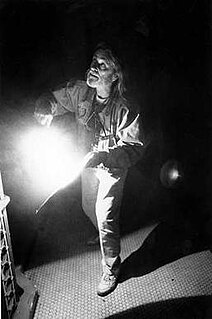
Conrad Lafcadio Hall, ASC was a French Polynesian-born American cinematographer. Named after writers Joseph Conrad and Lafcadio Hearn, he was best known for photographing such films as In Cold Blood, Cool Hand Luke, Butch Cassidy and the Sundance Kid, American Beauty, and Road to Perdition. For his work he garnered a number of awards, including three Academy Awards and three BAFTA Awards.

Cinematography is the art of motion-picture photography and filming either electronically by means of an image sensor, or chemically by means of a light-sensitive material such as film stock. Cinematographers use a lens to focus reflected light from objects into a real image that is transferred to some image sensor or light-sensitive material inside a movie camera. These exposures are created sequentially and preserved for later processing and viewing as a motion picture. Capturing images with an electronic image sensor produces an electrical charge for each pixel in the image, which is electronically processed and stored in a video file for subsequent processing or display. Images captured with photographic emulsion result in a series of invisible latent images on the film stock, which are chemically "developed" into a visible image. The images on the film stock are projected for viewing the motion picture.

Steadicam is a brand of camera stabilizer mounts for motion picture cameras invented by Garrett Brown and introduced in 1975 by Cinema Products Corporation. It mechanically isolates the camera from the operator's movement, allowing for a smooth shot, even when the operator moves over an irregular surface.

Andrew Lesnie ACS ASC was an Australian cinematographer. He was best known as the cinematographer for The Lord of the Rings trilogy (2001–2003) and its prequel The Hobbit trilogy (2012–2014), both directed by New Zealand director Peter Jackson. He received the Academy Award for Best Cinematography for his work on The Lord of the Rings: The Fellowship of the Ring in 2002.
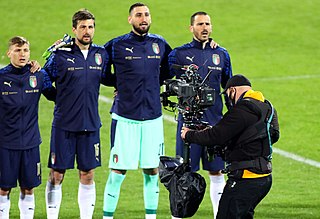
A camera operator, or depending on the context cameraman or camerawoman, is a professional operator of a film camera or video camera as part of a film crew. The term "cameraman" does not imply that a male is performing the task.

Gilbert Taylor, B.S.C. was a British cinematographer, best known for his work on films such as Dr. Strangelove, A Hard Day's Night, Repulsion (1965), The Omen (1976), and Star Wars (1977). In the course of his career, he collaborated with directors like Roman Polanski, Stanley Kubrick, Alfred Hitchcock, and Mike Hodges. He was nominated for two BAFTA Awards, and received a Lifetime Achievement Award from the British Society of Cinematographers.
Cinema Products Corporation was an American manufacturer of motion picture camera equipment.

Panavision is an American motion picture equipment company founded in 1953 specializing in cameras and lenses, based in Woodland Hills, California. Formed by Robert Gottschalk as a small partnership to create anamorphic projection lenses during the widescreen boom in the 1950s, Panavision expanded its product lines to meet the demands of modern filmmakers. The company introduced its first products in 1954. Originally a provider of CinemaScope accessories, the company's line of anamorphic widescreen lenses soon became the industry leader. In 1972, Panavision helped revolutionize filmmaking with the lightweight Panaflex 35 mm movie camera. The company has introduced other cameras such as the Millennium XL (1999) and the digital video Genesis (2004).
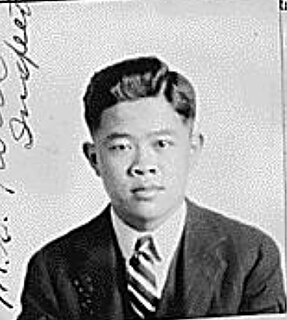
Wong Tung Jim, A.S.C., known professionally as James Wong Howe (Houghto), was a Chinese-born American cinematographer who worked on over 130 films. During the 1930s and 1940s, he was one of the most sought after cinematographers in Hollywood due to his innovative filming techniques. Howe was known as a master of the use of shadow and one of the first to use deep-focus cinematography, in which both foreground and distant planes remain in focus.
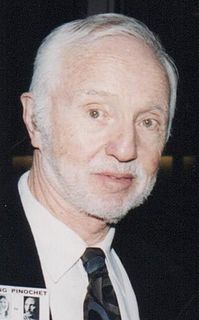
Haskell Wexler, ASC was an American cinematographer, film producer, and director. Wexler was judged to be one of film history's ten most influential cinematographers in a survey of the members of the International Cinematographers Guild.
Joseph Francis Biroc, ASC was an American cinematographer. He was born in New York City and began working in films at the Paragon Studios in Fort Lee, New Jersey. After working there for approximately six years, he moved to Los Angeles. Once in Southern California, Biroc worked at the RKO Pictures movie studio. During World War II, he served in the U.S. Army Signal Corps, and filmed the Liberation of Paris in August 1944. In 1950, Biroc left RKO Pictures and freelanced on projects at various studios. In addition to his film work, which included It's a Wonderful Life (1946) and The Flight of the Phoenix (1965), Biroc worked on various television series, including the Adventures of Superman and Wonder Woman. He frequently collaborated with film director Robert Aldrich.
Frederick James Koenekamp, A.S.C. was an American cinematographer. He was the son of cinematographer Hans F. Koenekamp.

Hand-held camera or hand-held shooting is a filmmaking and video production technique in which a camera is held in the camera operator's hands as opposed to being mounted on a tripod or other base. Hand-held cameras are used because they are conveniently sized for travel and because they allow greater freedom of motion during filming. Newsreel camera operators frequently gathered images using a hand-held camera. Virtually all modern video cameras are small enough for hand-held use, but many professional video cameras are designed specifically for hand-held use such as for electronic news-gathering (ENG), and electronic field production (EFP).
John Alcott, BSC was an English cinematographer known for his four collaborations with director Stanley Kubrick: 2001: A Space Odyssey (1968), for which he took over as lighting cameraman from Geoffrey Unsworth in mid-shoot, A Clockwork Orange (1971), Barry Lyndon (1975), the film for which he won his Oscar, and The Shining (1980). Alcott died from a heart attack in Cannes, France in July 1986; he was 55. He received a tribute at the end of his last film No Way Out starring Kevin Costner.
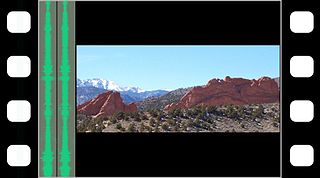
Anamorphic format is the cinematography technique of shooting a widescreen picture on standard 35 mm film or other visual recording media with a non-widescreen native aspect ratio. It also refers to the projection format in which a distorted image is "stretched" by an anamorphic projection lens to recreate the original aspect ratio on the viewing screen. The word anamorphic and its derivatives stem from the Greek anamorphoun, compound of morphé with the prefix aná. In the late 1990s and 2000s, anamorphic lost popularity in comparison to "flat" formats such as Super 35 with the advent of digital intermediates; however in the years since digital cinema cameras and projectors have become commonplace, anamorphic has experienced a considerable resurgence of popularity, due in large part to the higher base ISO sensitivity of digital sensors, which facilitates shooting at smaller apertures.

William G. Wilson was an American cinematographer and Director of Photography (DP) who filmed hundreds of championship sporting events during a career that spanned more than 50 years. Wilson filmed baseball, football, basketball, ice hockey, golf, boxing, horse-racing and auto racing. His pioneering work in television news-filming for WFIL-TV in Philadelphia, the first ABC affiliate station in the nation, set early standards for filming news and sports. During World War II, Wilson served as a combat cameraman and aviator with the United States Marine Corps, filming major action in the South Pacific on the ground and in the air.

Martin Kenzie was a British second unit director and cinematographer whose works include feature films such as The Shining (1980), Return of the Jedi (1983), Aliens (1986), The King's Speech (2010) and TV series including Rome (2005) and Game of Thrones (2012). He was a member of the British Society of Cinematographers as a Camera Operator and was later elected a "Full Member of the Society" with BSC accreditation in 2012. Kenzie was diagnosed with cancer and was being operated on with the help of Macmillan Cancer Support. He died on 16 July 2012 at the age of 56. The Game of Thrones season three premier episode, "Valar Dohaeris", aired on 31 March 2013, was dedicated to the memory of Kenzie in the credits.
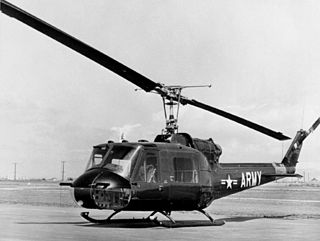
On July 23, 1982, a Bell UH-1 Iroquois helicopter crashed at Indian Dunes in Valencia, Santa Clarita, California, during the making of Twilight Zone: The Movie. The crash killed three people on the ground and injured the six helicopter passengers. Those killed were actor Vic Morrow and child actors Myca Dinh Le and Renee Shin-Yi Chen. The incident led to years of civil and criminal action and was responsible for the introduction of new procedures and safety standards in the filmmaking industry.
John Morley Stephens was an American cinematographer. He was noted for his innovative work on the 1966 film Grand Prix, for which he pioneered the use of a number of camera mounts and developed the first remotely operated pan-and-tilt-head camera. For this latter invention, he received a Technical Achievement Award from the Society of Operating Cameramen in 1994.

John Arnold (1889–1964) was an American cinematographer. He began in 1914, and in his 25 years behind the camera, he shot 86 films. He also worked in film administration, directing the cinematography department at MGM, and was president of the American Society of Cinematographers from 1931 through 1937, and again from 1939 to 1941. By 1938, he was regarded as one of the most authoritative experts on cinematography. He invented several pieces of camera equipment and was awarded two Oscars, both Technical Achievement Awards. The first was in 1938 for improvements on the semi-automatic follow focus device used on motion picture cameras, while the second was in 1940 for the development of the MGM mobile camera crane.